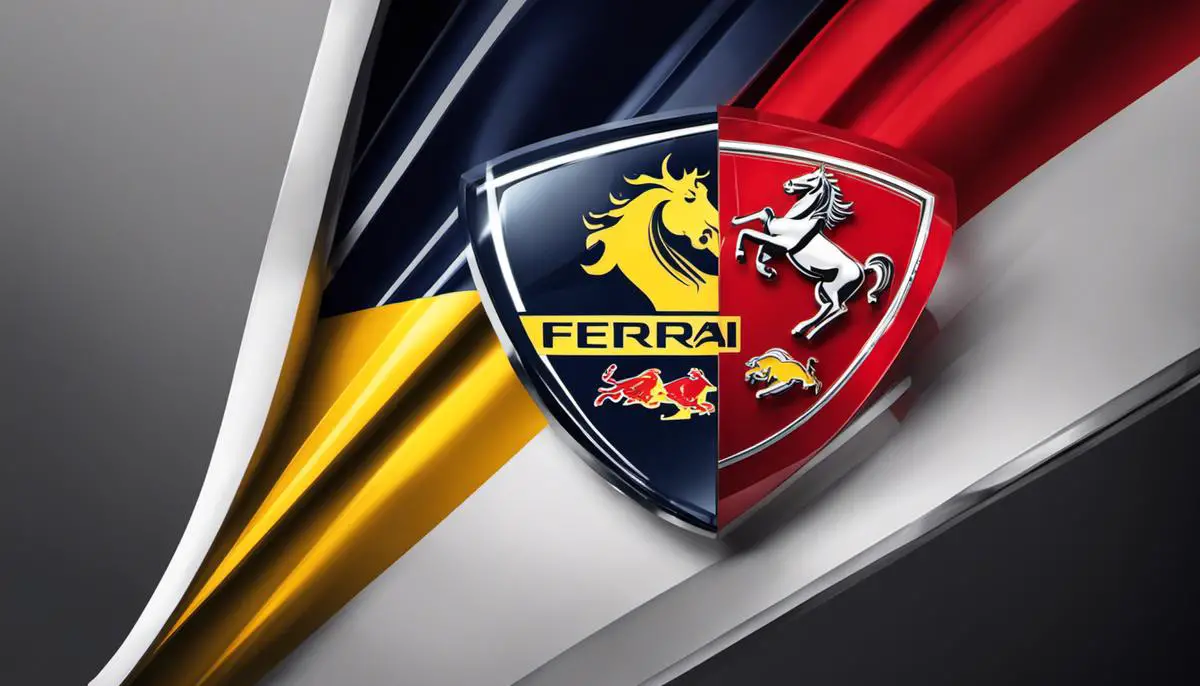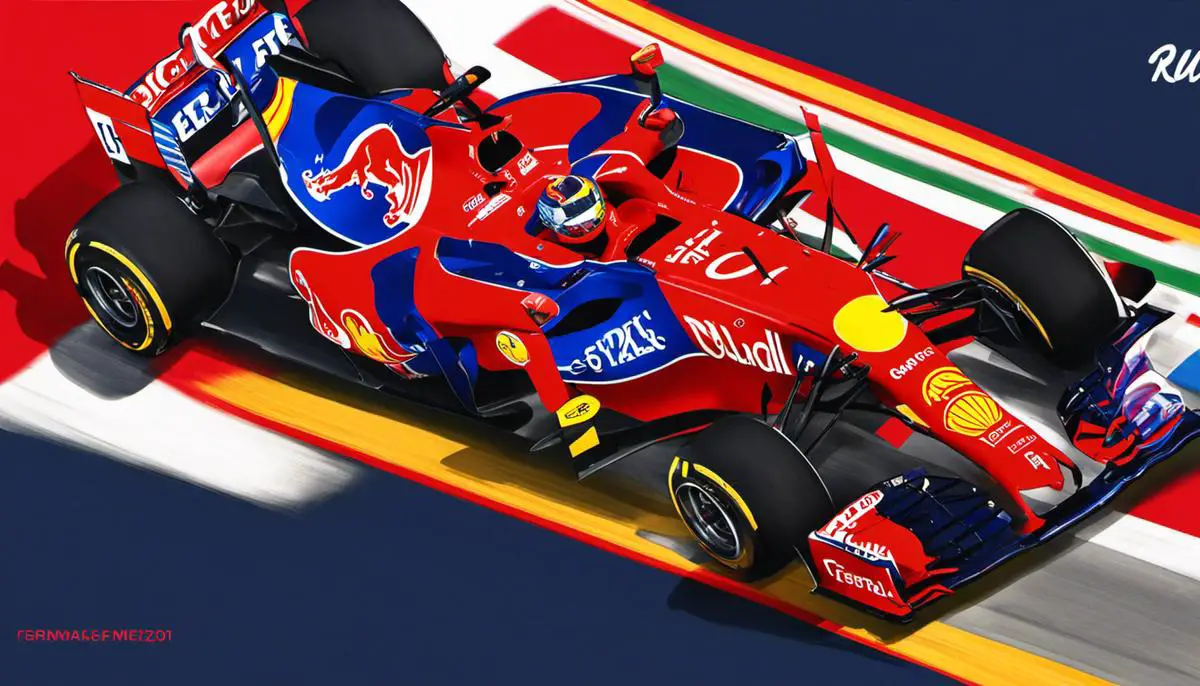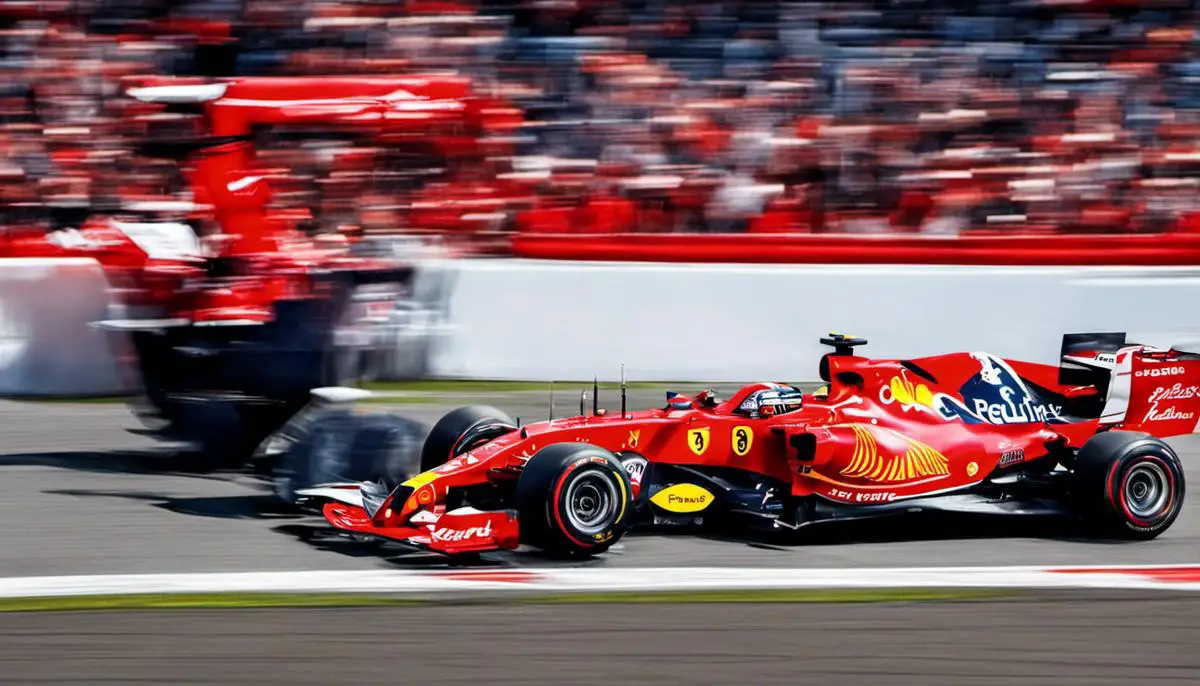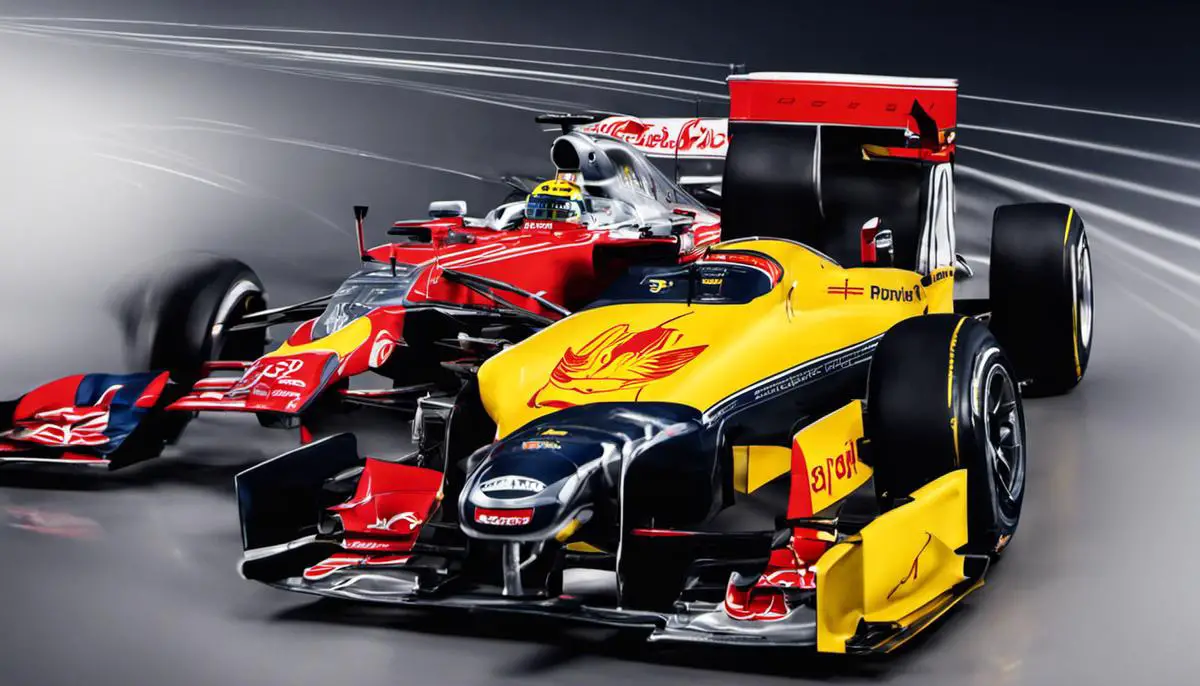The exhilarating world of Formula 1 racing is punctuated by the adrenaline-rushing speeds, cutting-edge vehicular technology, and the high-stakes rivalries that define its landscape. At the heart of this intricate nexus, two powerhouse teams, Ferrari and Red Bull, occupy a distinct and evocative presence. From their storied origins and journeys in the automotive industry to their pervasive impact on the motor racing sphere, their trajectories uncover a narrative that is as much about their internal chronicles as it is about their spirited contest. This discourse embarks on an exploration into the history, performance statistics, key drivers, vehicles, industry influence, and the intensely competitive rivalry of these two iconic entities – shining a light on what truly makes them Ferrari and Red Bull.
Historical Overview of Ferrari and Red Bull Racing
Ferrari: The Prancing Horse’s Legacy
Ferrari, one of the most identifiable brands globally, has a long and esteemed history. Established in Italy in 1939 by Enzo Ferrari, it has become renowned for its luxury road cars and its successes in the Formula 1 racing circuit. Exclusivity and performance are key elements of Ferrari’s image, a brand credited with producing some of the most classic high-performance automobiles.
In the world of professional motor racing, Ferrari holds an unparalleled legacy. It has been a part of the Formula One World Championship since its inception in 1950 and has so far accumulated a record 16 constructors’ championships and 15 drivers’ championships. Significant contributors to this successful run include celebrated drivers like Michael Schumacher, Niki Lauda, and Sebastian Vettel.
Red Bull Racing: From Energy Drinks to Racing Championship
On the other hand, Red Bull Racing is a much newer player in the world of motor racing. Born from an energy drink company, the team was originally known as Jaguar Racing until Red Bull took over in 2005. Under the direction of team principal Christian Horner and with the engineering prowess of chief technical officer Adrian Newey, the Austrian team quickly rose to prominence.
Red Bull Racing has since managed to carve a name for itself in the highly competitive world of Formula 1. In a short span of time spent, the team has won four constructors’ championships consecutively from 2010 to 2013, largely under Sebastian Vettel, who also secured his four world titles with the team. Red Bull Racing’s meteoric rise and continued success have demonstrated an impressive capability to compete with more established brands such as Ferrari.
Ferrari vs. Red Bull Racing: A Clash of Titans
Ferrari and Red Bull bring intense competition on the Formula 1 racing circuit. While Ferrari’s record is far more extensive due to its longevity, Red Bull Racing has achieved significant milestones in a shorter period. The two stables are frequently in close contention, jostling for position and points.
There have been several noteworthy encounters between Ferrari and Red Bull in recent years. For instance, from 2010 to 2014, a fierce rivalry arose between Ferrari’s Fernando Alonso and Red Bull’s Sebastian Vettel. The competition witnessed Red Bull’s dominance, with Vettel clinching four titles before moving to Ferrari in 2014.
However, Ferrari’s struggle to secure a championship title in more recent years does not diminish its reputation. Rather, it’s a testament to the heightened competition within the sport and the evolving nature of motor racing.
As different as their formations and histories may be, both Ferrari and Red Bull have made substantial contributions to Formula 1 racing, continuing to shape the international motorsport with their high-performance cars, fierce rivalries, and consistent desire to win.
Key Figures in Ferrari and Red Bull Racing
Both teams have been shaped by influential figures. Ferrari continues to represent the aspirations of its founder Enzo Ferrari, who wished to create the most powerful cars in the world. Scuderia Ferrari, the motorsport division, remains a testament to his vision.
For Red Bull, the duo of Christian Horner and Adrian Newey has been transformative. Horner, as team principal, oversees operations, while Newey, a respected Formula 1 designer, has been instrumental in developing Red Bull’s highly competitive cars that have challenged and often beaten the likes of Ferrari.
Ferrari and Red Bull Racing: An intriguing rivalry
The ever-present rivalry between Ferrari and Red Bull undeniably adds to the allure and intrigue of the world of Formula 1. A striking testament of the continuous pursuit for automotive perfection and supremacy, the dynamic competition between these two giants is a major highlight of the sport.

Analysis of Performance Statistics
A Comparative Study: Ferrari and Red Bull’s Performance Across The Years
In the fascinating universe of Formula 1 racing, the performance of Ferrari and Red Bull can be examined from various aspects, such as speed, reliability, and racing strategies. This section will delve into a detailed evaluation through charts, graphs, and other visual aids providing an easier and more visually compelling comparison of these stellar teams’ performance over time.
Comparative Pace Analysis
The first performance metric to consider is the pace of both teams. Historically, Ferrari has been known for its extreme speed and agility conferred by their engines. However, recently, Red Bull has exhibited impressive performance in this category. In the 2021 season, despite certain technical disadvantages, Red Bull outpaced Ferrari in multiple Grand Prix events, with its engine delivering a remarkable performance. It is also noteworthy to mention that Red Bull has been gaining on Ferrari’s pace statistics since the 2014 season.
Reliability Comparison
Reliability metrics can be assessed by looking at each team’s rate of mechanical failures and their ability to finish races consistently. Over the years, both Ferrari and Red Bull have had their share of reliability concerns, but it seems Red Bull takes a slight edge in this department. Considering the 10-year period from 2010 to 2020, Red Bull had fewer retirements due to car failures than Ferrari, indicating an arguably better reliability record. Nevertheless, this does not significantly detract from Ferrari’s reputation as it has been shown to face these challenges and overcome them through multiple subsequent races.
Race Strategy Analysis
Next, let’s delve into the aspect of race strategies. While both Ferrari and Red Bull have implemented successful strategic moves, their approaches are remarkably different. Ferrari, being the older and more experienced team, traditionally leans towards more conservative strategies. They tend to prioritize sustainability and long-term gains over riskier short-term advantages.
On the other hand, Red Bull, being a relatively younger team, isn’t shy to take daring decisions and aggressive moves on track. They frequently apply strategic gambles during the races, which have sometimes paid off handsomely, catapulting them to the front of the pack. Their strategies seem to be more flexible and acutely responsive to the race’s evolving dynamics.
In the world of Formula 1 racing, two powerhouses stand out, Ferrari and Red Bull, both commanding attention for their impressive performances. Unquestionably, these two have had their share of victories and challenges, but their resilience and innovation have consistently kept them in the spotlight. The way they break barriers and redefine the racing landscape is a testament to their unique strengths and racing philosophies. Their onward journey and future performance trajectory hold a captivating appeal for racing fans worldwide.

Driver and Vehicle Comparison
Behind the Wheel: Ferrari and Red Bull’s Star Drivers
In recent years, Ferrari has celebrated many victories thanks to the skills of its driver, Charles Leclerc. His journey with the team began in 2019, following an impressive breakout season with Sauber. A Monaco native, Leclerc’s speed and consistency have earned him two Formula 2 and GP3 Series championships to date.
Across the paddock, the Red Bull team takes pride in its own star driver, Max Verstappen. Since 2016, Verstappen has proven his mettle as one of today’s most thrilling F1 personalities. Born in Belgium and hailing from the Netherlands, he set a record in 2016 as the youngest Grand Prix winner ever. Verstappen’s exceptional overtaking abilities, defensive maneuvers, and wet-weather driving skills set him apart from his competitors.
Race Vehicle Examination: Ferrari SF21 vs Red Bull RB16B
Ferrari’s 2021 challenger, the SF21, features a slightly smaller wheelbase compared to its main rivals. It has a characteristic narrow, tapered rear end to aid airflow. The power unit, a 1.6L V6 hybrid, has been worked on heavily to increase its performance and efficiency. The SF21 also features a more aggressive front and rear wing aerodynamic package compared to previous models.
On the other hand, the Red Bull RB16B is a continuation of its 2020 predecessor. It inherits much of the design philosophy, including a shorter wheelbase and a high rake angle. Powering the RB16B is a Honda RA621H power unit that has shown enhancements in outright power and energy recovery. The vehicle’s performance is further boosted by its impeccable aerodynamics and efficient energy usage.
Driver and Vehicle Synergy: The Secret to Winning Races
Leclerc’s driving style seems to fit perfectly with the technical mechanics of the SF21. His capabilities in maximizing performance during qualifying sessions give him an upper hand when it comes to securing high grid placements. Moreover, he is especially adept at handling Ferrari’s improvements on the aerodynamics and engine front.
Verstappen’s aggressive driving style is well complimented by the RB16B. He capitalizes on the vehicle’s shorter wheelbase and high rake angle to attack corners aggressively and make tricky overtaking maneuvers, which has contributed to many of his wins.
Potential Areas of Improvement: A Continuing Quest for Perfection
Though the Ferrari SF21 boasts a number of strengths, one area for potential improvement has been its straight-line speed, a crucial attribute in many circuits. Ferrari could also possibly make strides in making the car faster in slower corners.
For Red Bull, an area of concern could be the reliability of the RB16B. Power unit-related issues have caused the team points in the past. Enhancing the reliability of the car without compromising on its power could potentially tip the championship balance in Red Bull’s favor.
In the world of Formula 1 racing, the rivalry between Ferrari and Red Bull is steeped in competition and represents the essence of the sport. Not only is it a direct reflection of driver skill and team strategy, but also serves as a testament to each team’s technical innovation. The battle for that elusive tenth of a second, which often determines the champion, lies at the heart of this ongoing rivalry.

Impact on the Motor Racing Industry
Ferrari’s Legacy in Motor Racing
As an inspiration to many, Ferrari’s contribution to motor racing is deeply rooted in a rich history that has seen it become a symbol of speed, luxury, and class. Initiated by Enzo Ferrari in 1939, this Italian automobile manufacturer has stood as a pillar in the world of Formula 1. This rich racing heritage stemming from being the oldest team in the championship has not only elevated the brand but also set it apart from others.
From a cultural perspective, Ferrari has efficiently etched itself as an emblem of Italian enthusiasm for racing. The immense brand loyalty it enjoys spans across the globe, not just within Italy. This dedication from fans is arguably as vibrant and passionate as Ferrari itself.
On the financial front, Ferrari’s immersion in motor racing has driven substantial investment into the industry. The sponsorships and lucrative advertising partnerships it has drawn have injected significant resources into the sport. This marked financial contribution has helped catapult Formula 1 to its high-profile status.
In terms of technology, Ferrari has been a game-changer in motor racing. It is known for pioneering several breakthroughs in automobile technology like semi-automatic gearboxes, traction control systems, and aerodynamic enhancements.
Red Bull’s Impact on Motor Racing
Red Bull’s entrance into Formula 1 in the mid-2000s signaled a shift in the industry, a daring challenge to the traditional powerhouses like Ferrari. The Austrian energy drink company brought a unique, youthful perspective to the formality of F1 racing, altering its image to mirror their brand identity as an adventurous, thrill-seeking entity.
Red Bull has injected a cultural dynamism into the motor racing industry. Their sponsorship of extreme events, athletes, and musicians has expanded the scope of motor racing, nudging it towards a younger demographic and increasing its global appeal.
From an economic perspective, Red Bull has revolutionized racing sponsorships. Their brand has created avenues for unconventional sponsors in a sport previously dominated by car manufacturers and oil companies.
In terms of technology, Red Bull has been instrumental in pushing the envelope. The company’s investment in aerodynamic design and engineering knowhow has produced competitive cars that have challenged and often triumphed over more established teams. Red Bull’s commitment to innovation has also spurred advancements in fuel technology and aerodynamic efficiency.
Ferrari versus Red Bull: A Tale of Two Philosophies
The brewing competition between Ferrari and Red Bull is a significant narrative in the world of motor racing, representing the juxtaposition of two contrasting ideologies. Ferrari, armed with a wealthy heritage and long-standing history in motorsport, seems to be the personification of tradition. On the other hand, Red Bull, which bursts with disruptive energy, characterizes the essence of modern zest and youthful spirit.
This dueling dynamic has molded Formula 1 into a unique melting pot of customary values and contemporary innovativeness. It’s a captivating fusion of old-school elegance and new-age vigor that captures the attention of diverse audience demographics, thereby maintaining the sport’s widespread popularity.

Exploring the Rivalry
The Genesis of a Rivalry: Ferrari Challenged by Red Bull
Tracing back the history of their rivalry, Ferrari and Red Bull Racing have been competitors on the Formula 1 battlefield since the uprise of Red Bull Racing as a serious contender in the early years of the 2010s. Before this, Ferrari, hailing from Italy, was widely respected as a pillar of the sport with its rich lineage reaching back to the 1950s. In stark contrast, Red Bull Racing, originating from Austria, is a newer entrant in the landscape of Formula 1, taking part in races merely two decades ago, in 2005.
The Rise of Red Bull and the Challenging of Ferrari’s Dominance
The rivalry took off in 2010 when Red Bull won its first Constructors’ Championship, unseating Ferrari and other dominant entities of the time. Under the proficient leadership of Team Principal Christian Horner and with ace drivers Sebastian Vettel and Mark Webber, Red Bull Racing managed to claim the championship title four consecutive times, from 2010 to 2013. During those years, Ferrari struggled to maintain a competitive edge, despite boasting proven talents such as Fernando Alonso and Felipe Massa, and later, Sebastian Vettel who shifted from Red Bull.
Significant Moments
One of the most significant moments in the Ferrari-Red Bull rivalry was in 2018 at the Azerbaijan Grand Prix. A crash between Red Bull teammates Daniel Ricciardo and Max Verstappen gave Ferrari’s Sebastian Vettel an opportunity to seize the lead, only for him to lock up his tires and yield not only the lead, but other placements to Lewis Hamilton of Mercedes and Valtteri Bottas.
Insights from Experts and Fans
From experts’ perspectives, the Ferrari-Red Bull rivalry has largely been dictated by tech advancements and the capacity of each team to adapt to changing regulations on car specifications. In terms of fan base, both teams enjoy substantial global support, but Ferrari — being the older team with a longer standing history — has a significant loyal fan base in Italy and beyond. Opinions on the rivalry vary: some fans appreciate Red Bull’s disruptive presence that challenges the established hierarchy, while others remain faithful to Ferrari, respecting their historical legacy and prowess.
Current State of The Rivalry
In recent years, the Ferrari vs Red Bull competition has become even more intriguing. As of the 2021 season, Red Bull, led by Max Verstappen, presents a strong challenge to the dominance of Mercedes, while Ferrari, led by Charles Leclerc and Carlos Sainz Jr., is undergoing a rebuilding phase. Despite the downhill trajectory in recent years, Ferrari’s resolve to reclaim their top status continues to heat the rivalry.
It’s clear that the rivalry between Ferrari and Red Bull is more than just about racing. It’s a clash of legacies — the longevity and established prestige of Ferrari challenging the more recent yet forceful surge of Red Bull. It speaks to the evolution of Formula 1 sport and its future.

This narrative drawn from the realms of Ferrari and Red Bull is not merely about their individual paths, but it also speaks volumes about the dynamism and transformation of the Formula 1 world itself. The constant essence of competition fosters innovation, driving both teams to reach new heights in vehicular technology, racing strategy, and driver performance. As the wheels of these race cars keep turning, so does their shared and distinctive legacy, reinforcing their unique statures while carving out new narratives for the next generation. But beyond the charts, analytics, and expert opinions, the essence of this saga lies in the very spirit of motor racing: the unwavering pursuit of speed, precision, excellence, and the indomitable will to rise above the rest. That is what makes the enigmatic tale of Ferrari and Red Bull a story worth telling.

